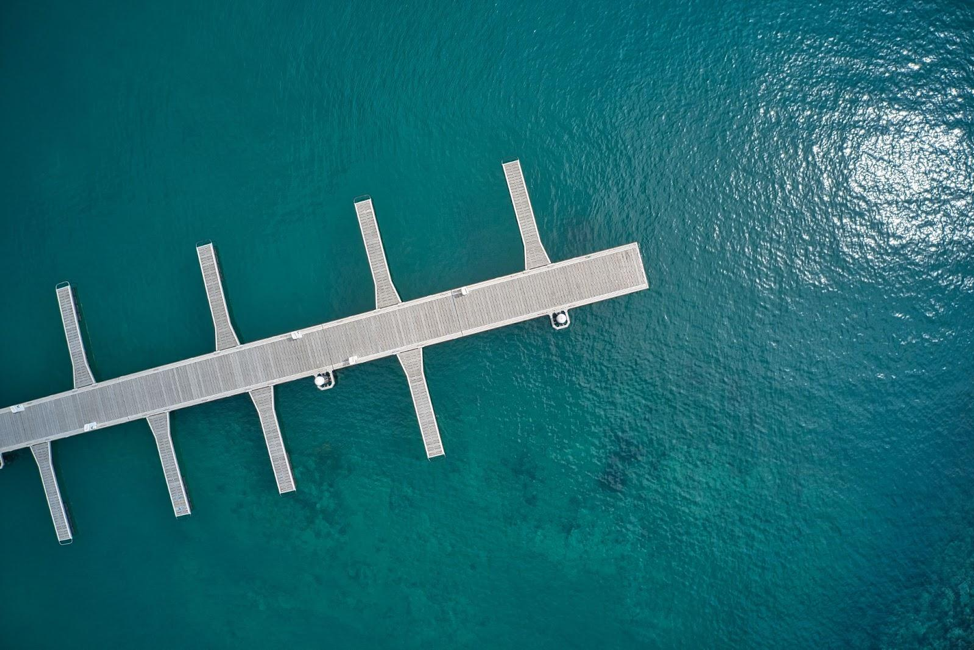Create the Perfect Docking Option With Floating Docks
Floating docks existing a functional solution for a selection of maritime requirements, adjusting flawlessly to rising and fall water degrees and diverse vessel types. As we discover the crucial components that add to the efficiency of floating docks, numerous essential elements concerning security and maintenance will arise, increasing questions about just how to enhance your docking experience.

Benefits of Floating Docks
Floating docks deal countless advantages that make them a perfect option for different maritime applications. Among the primary benefits is their adaptability to altering water levels. Unlike dealt with docks, floating docks fluctuate with the tide, ensuring constant availability for vessels. This function is especially essential in locations prone to substantial tidal fluctuations or seasonal water level adjustments.
Additionally, floating docks are normally much easier and quicker to set up compared to conventional fixed structures. Their modular layout permits simple setting up and disassembly, assisting in maintenance and relocation when essential. This flexibility is specifically valuable for momentary applications or in atmospheres where problems might alter.
Floating docks likewise tend to be a lot more eco pleasant, as they reduce disturbance to the seabed and surrounding aquatic ecosystems. Their resilient nature minimizes the risk of damages to marine life, promoting a healthier atmosphere. Furthermore, these docks can be customized to fit numerous vessel dimensions, guaranteeing that they meet certain functional demands - floating dock builder.
Ultimately, the mix of versatility, convenience of installment, and environmental considerations makes floating docks a highly efficient solution for a vast variety of maritime needs.
Choosing the Right Materials
Picking the appropriate materials for floating docks is vital to ensure resilience, long life, and security. The choice of materials directly influences the dock's efficiency in numerous environmental conditions, including exposure to water, sunlight, and prospective wear from marine traffic.
Typical materials utilized for floating docks include aluminum, wood, and high-density polyethylene (HDPE) Light weight aluminum is light-weight, corrosion-resistant, and calls for marginal upkeep, making it an exceptional selection for long life. Nonetheless, its first cost can be higher contrasted to various other products.
Wood, while cosmetically appealing and giving a typical appearance, can be at risk to rot and pest damages otherwise properly treated. Using pressure-treated timber or normally sturdy varieties like cedar or redwood can mitigate these issues.
HDPE is a preferred selection due to its resistance to UV rays and chemicals, in addition to being ecologically friendly. floating docks. It is lightweight and readily available in numerous shades, permitting modification
Eventually, the right product option will certainly depend upon particular demands, including budget, wanted visual appeals, and ecological factors to consider. Cautious assessment of these variables will result in a resilient and successful floating dock solution.
Style Considerations for Stability
When making floating docks, making sure security is a basic element that can dramatically affect their functionality and security. Stability in floating dock design is affected by different factors, including buoyancy, weight distribution, and the setup of elements.
Weight distribution is important; evenly distributing lots across the dock prevents turning and enhances stability. This can be accomplished via strategic placement of docking equipment, my company such as cleats and fenders, along with proper spacing of floats. Additionally, the dimensions of the dock should be thoughtfully planned. Wider styles can provide boosted security, especially in rough water problems, while longer docks may need extra assistances to avoid drooping.
An additional essential factor to consider is the ecological influence, including wave action and wind. Incorporating features such as sidewalls or skirting can aid reduce the impacts of environmental forces, keeping security in adverse problems. Inevitably, a combination of thoughtful design, material selection, and understanding of ecological variables will certainly generate a floating dock that satisfies both stability and safety needs.
Setup Tips and Techniques

Following, safeguard the necessary permits and abide by local laws, which may dictate installation methods and ecological considerations. Engage a qualified professional experienced in floating dock installations if needed. Usage high-grade products made for aquatic atmospheres to improve resilience and longevity.
When positioning the dock, straighten it alongside the shoreline to facilitate very easy accessibility. Ensure that the anchoring system is durable, utilizing concrete blocks or helical supports to maintain the dock against wind and wave activity. It's critical to represent seasonal water level variations, including potential ice activity in colder environments.
During the installment, confirm the dock's floatation and stability before finalizing the anchoring. Consistently check the installation for any kind of signs of wear or damages. By adhering to these techniques and pointers, you can achieve a safe and secure, practical, and aesthetically pleasing floating dock setup that satisfies your demands.
Maintenance and Treatment Guidelines
Preserving and caring for floating docks is critical to lengthening their lifespan and guaranteeing risk-free usage. Regular assessments need to be performed to determine any kind of indicators of wear, damages, or aquatic development. Seek fractures, loosened fittings, or discolored areas on the dock's surface, as these problems can jeopardize architectural honesty.
Cleansing is vital. Use a pressure washing machine to get rid of algae, barnacles, and debris, which can accumulate over time. For stubborn growth, think about ecologically friendly cleansing representatives that will not hurt water life.
Furthermore, check the mooring lines and anchors often to ensure they are complimentary and safe from corrosion. Replace any type of frayed or damaged lines without delay to keep stability.
Throughout severe climate, such as find tornados or freezing conditions, take precautionary measures. Safeguard the dock with added mooring lines and, if practical, get rid of any removable elements to avoid damage.
Conclusion
In verdict, the execution of floating docks presents a reliable and flexible docking option ideal for different maritime applications. With proper setup and normal maintenance, floating docks can provide effective and reputable docking experiences for a vast array of vessels.
As we check out the important components that contribute to the performance of floating docks, several key variables concerning security and upkeep will certainly emerge, elevating inquiries about how to enhance your docking experience. Unlike taken care of docks, floating docks surge and loss with the tide, making certain regular accessibility for vessels.When developing floating docks, making certain stability is a fundamental aspect that can significantly impact their performance and safety and security. Security in floating dock style is affected by different aspects, consisting of buoyancy, weight distribution, and the plan of elements. Eventually, a mix of thoughtful style, product option, and understanding of ecological variables will certainly generate a floating dock that satisfies both security and safety and security needs.